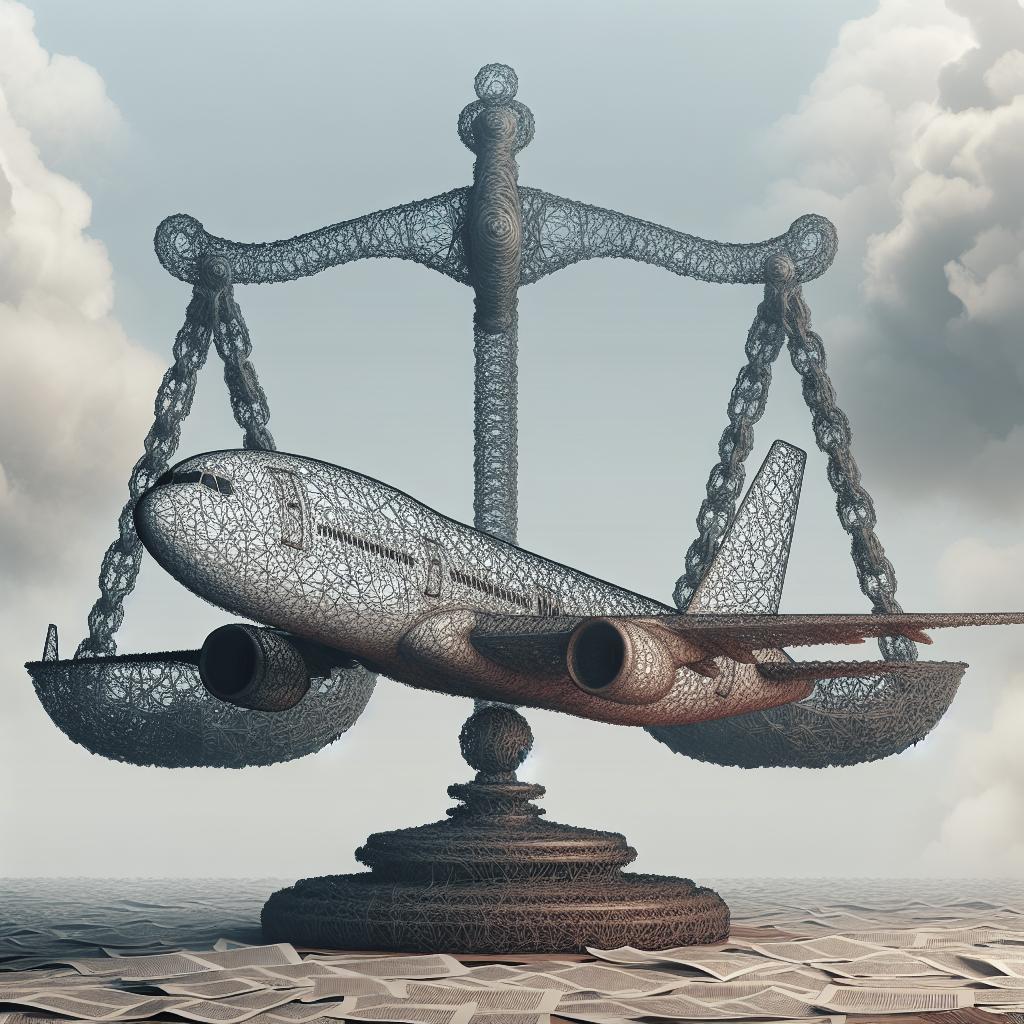The Impact of Aviation Law on Airlines
Aviation law significantly affects how airlines operate across the globe, shaping everything from international travel routes to passenger rights. In Canada, air transport regulations form a complex framework designed to ensure safety, competency, and fairness within the industry. This article delves into the specifics of Canadian air transport regulation, exploring federal statutes, how they govern air operators, and the key government bodies responsible for enforcement. Understanding these aspects provides valuable insight into the operational landscape of airlines, highlighting the meticulous balance between regulation and service. By examining recent articles, licensing requirements, and the regulation of diverse air operators, this piece provides a comprehensive overview of how aviation law impacts airlines, particularly within the Canadian context.
What are Canada’s laws on air transport regulation?
Recent Articles
Recent developments in Canadian air transport regulation have witnessed significant changes that aim to improve safety, efficiency, and consumer protection. Articles introduced in the last few years focus on addressing emerging challenges, such as evolving technology and increased competition in the aviation industry. These articles ensure that Canada’s aviation laws remain relevant and robust amidst an ever-changing global landscape.
One of the significant recent articles involves enhancing security measures in response to growing cybersecurity threats. The incorporation of cutting-edge technology aims to streamline operations while protecting sensitive data. Legislators continuously evaluate these measures, ensuring that the industry maintains the highest safety standards.
Simultaneously, new regulations have emerged to address environmental concerns, reflecting a global shift towards sustainable aviation. By implementing policies that reduce carbon emissions and promote fuel-efficient practices, these articles play a crucial role in aligning Canada’s aviation industry with international environmental goals.
Air transport regulation enacted from federal statutes
Federal statutes constitute the backbone of air transport regulation in Canada, forming a framework that ensures safety and reliability within the aviation industry. These laws address various aspects, including air traffic management, safety protocols, and the operation of aircraft. By formulating clear guidelines, federal statutes help maintain a structured and cohesive aviation environment.
The Aeronautics Act serves as a primary legislative foundation, empowering the federal government to regulate air transport comprehensively. This act encompasses numerous regulations, including airworthiness standards and the management of airspace, effectively enhancing the safety and efficiency of Canadian aviation.
Additionally, the Canadian Aviation Regulations (CARs) expand on the Aeronautics Act by providing detailed rules and requirements for all facets of aviation, including certification processes and training procedures. Through rigorous enforcement of these federal statutes, Canada upholds its commitment to maintaining a safe and reliable air transport system.
How are air operators governed by air transport regulation in Canada?
Licensing of pilots and flight crew members
Licensing pilots and flight crew members represents a crucial aspect of air transport regulation in Canada, ensuring that those responsible for operating aircraft possess the necessary skills and expertise. The licensing process involves rigorous assessments, including theoretical knowledge and practical examinations, designed to uphold high safety standards.
The Canadian transportation agency oversees these licenses, ensuring compliance with both national standards and international agreements. Regular renewal and update of certifications are required, reflecting continual advancements in aviation technology and procedures. This approach guarantees that all licensed individuals remain competent and informed about the latest developments in aviation.
Furthermore, ongoing training programs and assessments are mandated for license holders, promoting a culture of continuous learning and improvement within the aviation industry. By maintaining strict licensing regulations, Canada ensures the highest level of safety in its airspace and services.
Regulation of the different types of air operators
The regulation of various air operators in Canada is tailored to accommodate the distinct characteristics and needs of different aviation services. This distinction ensures that diverse operators, ranging from commercial airlines to smaller charter services, adhere to appropriate safety and operational standards.
Each category of air operator is subject to specific rules outlined within the Canadian Aviation Regulations (CARs). For instance, commercial airlines must comply with regulations addressing passenger safety, aircraft maintenance, and operational efficiency. In contrast, private operators and recreational pilots face different, but similarly stringent, regulatory requirements.
By enforcing specialized regulations, Canada maintains a structured oversight system that accommodates the wide range of air services within the country. This adaptive approach ensures that all operators, regardless of their size or function, operate safely and efficiently.
Protection of air travelers and handling complaints
Protecting air travelers and effectively handling complaints are essential components of air transport regulation in Canada. Consumer protection laws are in place to guarantee fair treatment of passengers, including timely compensation for delays, cancellations, or lost luggage.
The Air Passenger Protection Regulations (APPR) are specifically designed to outline clear, enforceable rules regarding passenger rights. These regulations stipulate conditions under which passengers can claim compensation, ensuring that airlines remain accountable for their operations and services.
Moreover, a robust complaint handling mechanism facilitates efficient resolution of passenger grievances. The Canadian Transportation Agency (CTA) provides platforms for addressing issues, ensuring that passengers receive prompt responses and just resolutions to their concerns. This consumer-centric focus reinforces the trust and satisfaction of travelers in the Canadian aviation system.
What government bodies enforce Canada’s air transport regulations?
Several government bodies play a pivotal role in enforcing air transport regulations in Canada, thereby ensuring an organized and safe aviation environment. Transport Canada operates as the primary regulatory authority, responsible for developing and enforcing regulations that maintain aviation safety and efficiency.
The Canadian Transportation Agency (CTA) serves as a key mediator in regulatory compliance, addressing consumer protection and dispute resolution. Its role extends to licensing air operators and monitoring compliance with related laws and regulations. By serving as the conduit between policy and practice, the CTA ensures airlines adhere to established guidelines.
Additionally, the Transportation Safety Board of Canada (TSB) investigates aviation accidents, aiding in the identification of core issues and aiding in the development of safety improvements. Through rigorous investigations and feedback, the TSB enhances the overall safety and reliability of Canadian aviation.
Summary of Main Points
| Aspect | Key Details |
|---|---|
| Recent Articles | Enhance security through technology, address environmental concerns with sustainable practices. |
| Federal Statutes | Aeronautics Act and CARs provide comprehensive regulatory frameworks. |
| Licensing of Pilots | Rigorous assessments and ongoing training ensure high safety standards. |
| Air Operator Regulation | Tailored regulations for different operators, ensuring safety and efficiency. |
| Passenger Protection | APPR ensures fair treatment and compensations, efficient complaint handling. |
| Government Bodies | Transport Canada, CTA, and TSB enforce regulations and maintain safety. |


